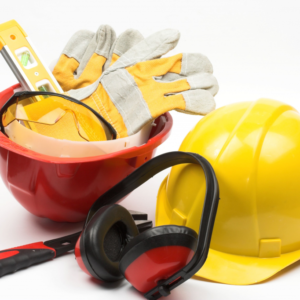As global awareness of workplace safety and health continues to rise, the personal protective equipment (PPE) market is also rapidly expanding. From construction sites to healthcare and emerging industries, the demand for PPE is growing at an accelerated pace across various sectors. So, which sectors will drive the growth of the PPE market in 2025? Let’s explore.
1. Healthcare Sector: Growing Health Awareness Post-Pandemic
Although the global pandemic has eased, its impact continues, particularly in the healthcare and medical fields. As people’s focus on health protection increases, the demand for PPE in healthcare continues to grow. The need for medical protective equipment such as masks, respirators, face shields, and protective clothing will remain strong.
In addition to hospitals and clinics, more public health agencies, diagnostic centers, and eldercare facilities are ramping up their PPE procurement. As the global population ages, the demand for PPE in the healthcare sector is expected to grow even further in 2025.

2. Construction and Industry: Stricter Safety Regulations and Greater Employee Protection
The construction industry has always been a significant part of the PPE market. With stricter enforcement of safety regulations on construction sites and companies placing greater emphasis on employee health protection, the demand for PPE in construction will continue to rise in 2025. This is particularly true in high-risk environments, such as working at heights, operating heavy machinery, and handling hazardous chemicals, where the need for helmets, eye protection, ear protection, gloves, and high-safety shoes will intensify.
At the same time, the global push for sustainability will drive innovation in PPE products related to green building and eco-friendly materials, further fueling demand in this sector.

3. Manufacturing Sector: New Demand Driven by Automation and Robotics
With the digital transformation of the manufacturing industry, the application of automation and robotics is becoming more widespread. While smart devices improve work efficiency, they also introduce new safety challenges. To address these challenges, the demand for diverse PPE will grow. For instance, smart PPE equipped with sensors can monitor workers’ health and provide real-time feedback to enhance safety in the workplace.
Additionally, manufacturing processes involving hazardous chemicals and precision machining require stricter PPE standards. As the global economy recovers, manufacturing demand is expected to continue growing, expanding the PPE market in this sector.

4. Energy Sector: Driven by Renewable Energy and Oil & Gas
With increased global investment in renewable energy, industries such as solar and wind energy are seeing a rise in PPE demand. Workers in wind power generation, solar facility construction, and maintenance face risks such as working at heights and extreme weather, driving the demand for basic PPE like helmets, protective clothing, and slip-resistant shoes.
Furthermore, the traditional oil and gas industry continues to have a long-term demand for high-quality PPE, especially in extreme environments such as offshore oil platforms and remote mining sites. As environmental and safety standards improve, the demand for high-quality PPE in the oil and gas industry is set to increase.

5. Transportation and Logistics: E-commerce Boom Fuels Safety Demand
With the rapid growth of global e-commerce, the transportation and logistics sector is seeing a surge in PPE demand. To ensure the safety of warehouse workers, truck drivers, and others, PPE products such as gloves, helmets, slip-resistant shoes, and reflective vests have become essential.
In high-risk environments such as cargo handling, transportation, and delivery, PPE is indispensable. Additionally, with the adoption of new technologies like drones and automated warehouses, new safety requirements will further drive innovation and upgrades in PPE products.

6. Aerospace and Defense: High-Risk Workplaces Drive Demand
The aerospace and defense industry has always had a high demand for PPE. Whether for pilots, defense personnel, or workers involved in aerospace manufacturing and maintenance, there is a need for high-standard personal protective equipment. As technology advances, the aerospace industry’s demand for new PPE will focus more on high-performance protection, such as heat resistance, radiation shielding, and impact resistance.
With increased global defense budgets and the development of new combat technologies, PPE demand in aerospace and defense will continue to grow in the coming years.

7. Food Processing and Agriculture: Enhanced Protection Against Chemical and Biological Risks
The food processing and agriculture sectors also have a steady demand for PPE. To protect workers from chemicals, biological hazards, and other potential risks in the working environment, food processing plants and agricultural businesses require protective gloves, masks, safety goggles, and other PPE products.
Particularly in agriculture, where there is a higher risk of biological hazards such as pest control and pesticide spraying, PPE is critical. As global attention on agricultural product quality and food safety increases, the demand for PPE in the food processing and agriculture sectors is expected to continue growing in the coming years.

Conclusion
With the global economic recovery and rising safety awareness across industries, the PPE market in 2025 will show trends toward diversification and technological innovation. Demand growth in healthcare, construction, manufacturing, energy, transportation, aerospace, and defense sectors will be key drivers of market development. At the same time, smart, eco-friendly, and customized PPE products will be the focal points of innovation, with businesses needing to keep pace with trends and provide solutions that meet industry needs.
In this era where safety is increasingly prioritized, PPE is not only a crucial tool for protecting employee health but also a key factor in promoting safety culture and sustainable development across industries.


